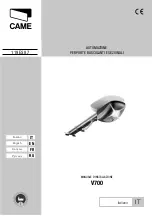
INARC-1000 I/ 1250 I
·4·
FUMES AND GASES can be dangerous
5.a. Welding may produce fumes and gases hazardous to health. Avoid breathing these fumes
and gases. When welding, keep your head out of the fume. Use enough ventilation and/or
exhaust at the arc to keep fumes and gases away from the breathing zone. When welding
with electrodes which require special ventilation such as stainless or hard facing or on
lead or cadmium and plated steel and other materials or coatings which produce highly
toxic fumes, keep exposure as low as possible and below Threshold Limit
Values (TLV)
using local exhaust or mechanical ventilation. In confined spaces or in some
circumstances, outdoors, a respirator may be required. Additional precautions are also
required when welding on galvanized steel.
5.b. The operation of welding fume control equipment is affected by various factors including
proper use and positioning of the equipment, maintenance of the equipment and the
specific welding procedure and application involved. Worker exposure level should be
checked upon installation and periodically thereafter to be certain.
5.c. Do not weld in locations near chlorinated hydrocarbon vapors coming from degreasing,
cleaning or spraying operations. The heat and rays of the arc can react with solvent vapors
to form phosgene, a highly toxic gas, and other irritating products.
5.d. Shielding gases used for arc welding can displace air and cause injury or death. Always use
enough ventilation, especially in confined areas, to insure breathing air is safe.
5.e. Read and understand the manufacturer’s instructions for this equipment and the
consumables to be used,
5.f. Also see item 1.b.







































